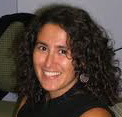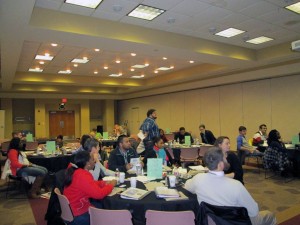Green Dot aims to create a culture of saying ‘no’ to violence
Throughout September, the University of Arkansas at Little Rock hosted numerous training sessions and activities designed to highlight and emphasize safety.
One of the featured safety initiatives — celebrated with the obstacle-style Green Dot Amazing Race on Sept. 25 — began with an effort to change the culture on campus in the fall of 2012.
The UALR Green Dot website explains, “a green dot is any behavior‚ choice‚ word‚ or attitude that promotes safety for all of us and communicates zero tolerance for violence.”
UALR was the first university in Arkansas to launch a Green Dot program. The initiative is built on the idea that a cultural shift is necessary to measurably reduce power-based violence.

To create this cultural shift, a large number of people need to engage in new behaviors that make violence less sustainable in the UALR community. Green Dot teaches these intervention behaviors.
Dr. Laura Barrio-Vilar, English professor and chair of the Green Dot steering committee, brought the program from her alma mater, the University of Kentucky, where it started.
Green Dot was launched with the idea of using education and skills training to direct the power of peer influence to prevent violent crimes and to prepare bystanders to intervene should they occur.
“Since I had a chance to witness how effective it was while I was a graduate student at the University of Kentucky, and as soon as the incident with Patricia Guardado happened, I wanted this right away,” Barrio-Vilar said. “I’m really happy that so many people gathered together to make it a reality.”
Barrio-Vilar was a relatively new member of the UALR community when student Patricia Guardado was kidnapped near campus and killed in 2011.
In initiating the program, concerned faculty raised funds to have a group of 50 faculty, staff, and community members trained to teach students how they can make the campus a safer place.
Getting involved
Anybody can become a part of Green Dot by attending one of the program’s free sessions.
“We have our own student advisory committee who are incredibly important in terms of helping with advertising, helping develop programming, and making things more than just educational but also entertaining,” Barrio-Vilar said.
Green Dot organizers would love to have more graduate students involved in the student advisory council, Barrio-Vilar said.
For new program participants, free Green Dot sessions are held at least once a semester, using video, role-playing and other exercises to help students counteract power-based personal violence. The organization also hosts one-hour sessions for faculty and staff.
The next bystander student training will be announced soon on the UALR Green Dot website. Students receive a certificate of participation that may be used in a resume. Students also earn numerous service-learning hours that can count toward certain programs on campus. In addition to the skills that students develop, participants also receive Green Dot T-shirts, pens, memo cubes, flashlights, and wristbands.
“Our main goal, I think, is to have everyone go through the training,” Barrio-Vilar said. “The more people we can reach out to, the better. It’s all about raising awareness as to how much power we have just as bystanders, to put an end to power-based personal violence.”
In the long run, Barrio-Vilar would like to expand Green Dot outside the community, to get off-campus residents and organizations involved, so they can start their own Green Dot programs.
“The idea is to expand this culture of saying, ‘no’ to violence as far as we can,” Barrio-Vilar said.
A long-time safety focus
Before Green Dot took hold, the See Something, Say Something campaign was used on campus.
“UALR has always done some form of campus safety,” said Darrell McGee, associate dean of students. “It’s always been something we’re concerned about. What Green Dot did, it captured the campus community.”
UALR also implements Title IX training which is mandatory for all employees and offered to students.
“I’m happy to say over 40 percent of students are participating in the training,” said Richard Harper II, the assistant dean of students. “We have education and awareness programs throughout the year. We definitely don’t turn our backs on sexual assault or power-based violence around here. We’ve always been concerned about safety.”

